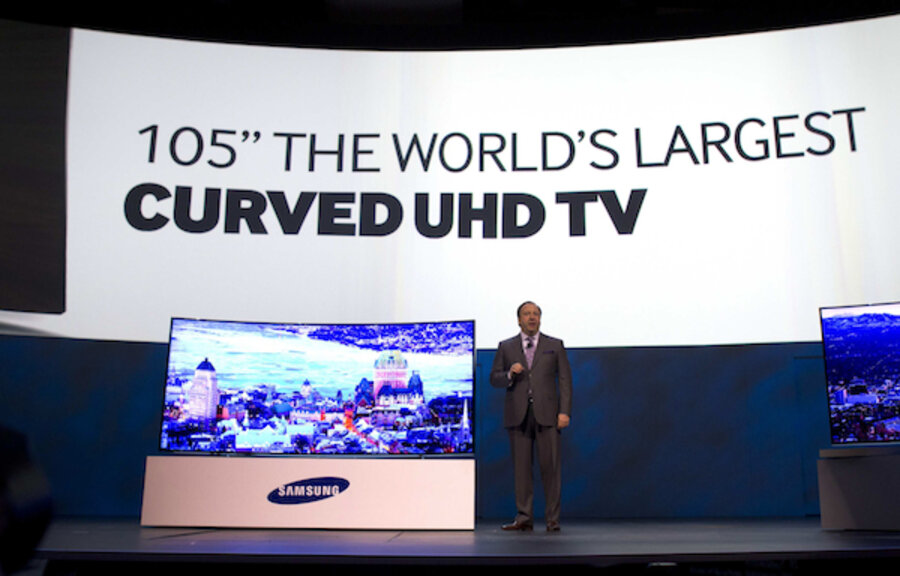For Samsung, the future of TV is all in the curve
Loading...
Forget plain-old flat-screens. If Samsung has anything to say about it, the future of television-watching will be all about the curves.
At the annual CES confab in Las Vegas, reps for the Korean conglomerate took the wraps off a line of "Curved Ultra High Definition television sets," or CUHD TVs – devices that bend inward, toward the viewer, like a mini-IMAX display. Beginning in the second quarter of 2014, Samsung will sell a range of curved sets in the US, including a 110-inch model.
In a press release, Samsung said its engineers had developed the "optimal curvature... which provides the best picture quality from a normal watching distance of 3 – 4 meters [nine to 13 feet, roughly]. The combination of the curve and UHD technology creates the ultimate immersive viewing experience bringing images to life with spectacular color, clarity and detail."
The press release also mentions something called an "Auto Depth Enhancer, an algorithm that analyses regions of images and automatically adjusts contrast for a greater sense of depth – giving an almost 3D like effect without glasses."
No word yet on release date or exact price, although you can bet that the CUHD TVs won't be cheap – new technology rarely is. Still, the appeal of the curved sets, with their ability to give the appearance of "wrapping around" the viewer, is clear. Can you imagine playing a video game on one of these things, while surround sound blares from the speakers? We can.
In related news, LG used the occasion of CES to debut its curved smart phone, the G Flex, for US audiences. The G Flex has a curved display and a bendable body – think of it as the Gumby of smart phones.
The device, notes Sascha Segan of PC Mag, is "pocket-proof, and wonderfully springy. I put it face-down on a table, leaned on it, watched it flatten out, and watched it spring back. Then I sat on it. Then I bounced it on the floor a few times. I wouldn't try to snap it in half, but it's the flexiest phone I've seen in a long time."
The G Flex gets a 6-inch display, edging it close to "phablet" territory; it is expected to launch sometime this year.







